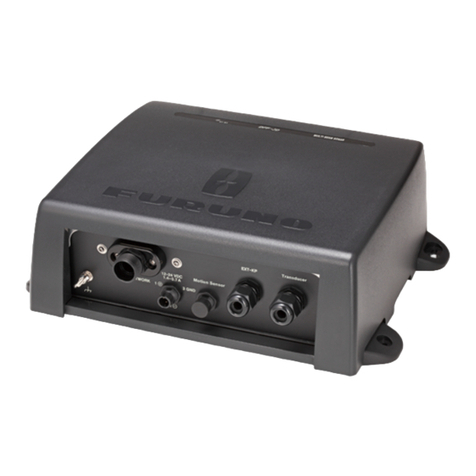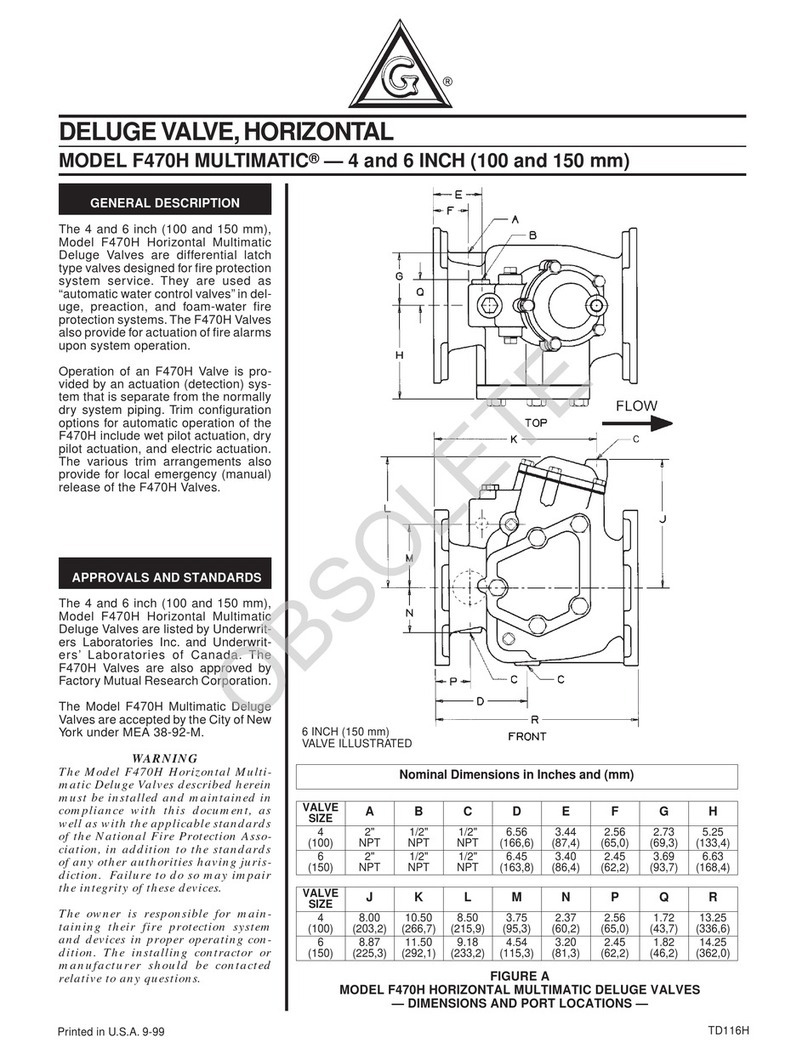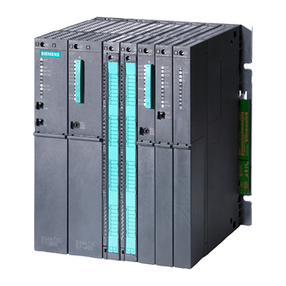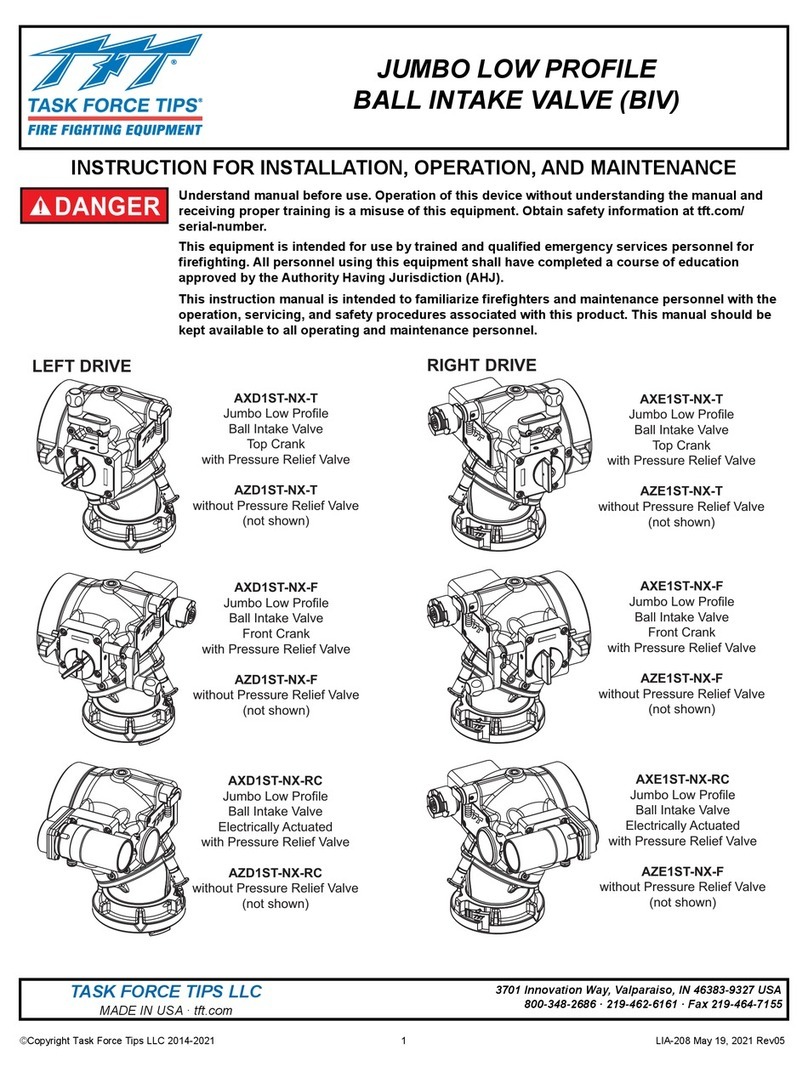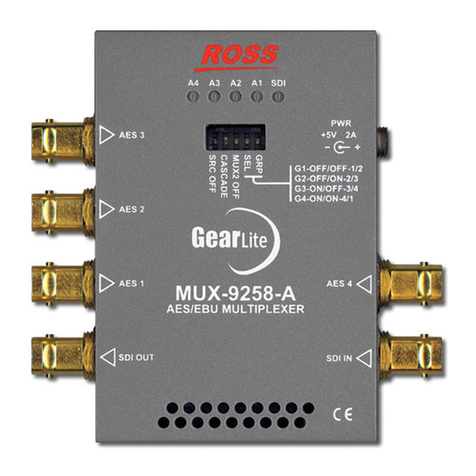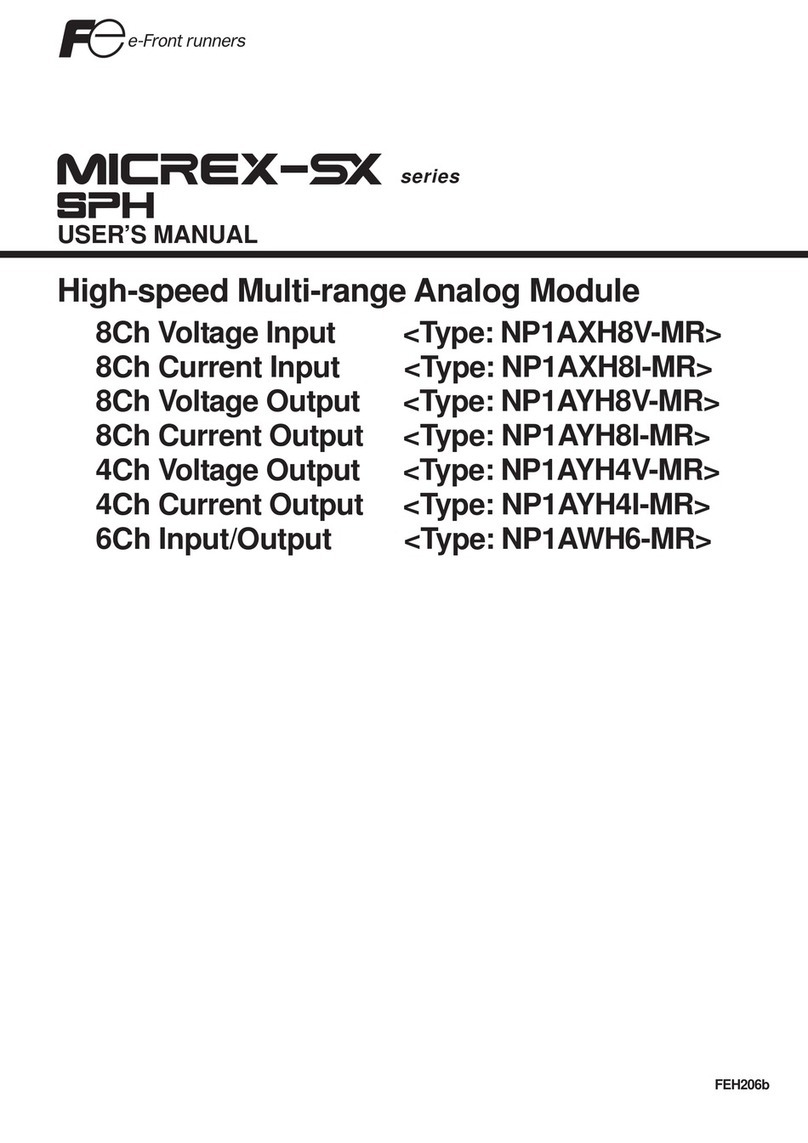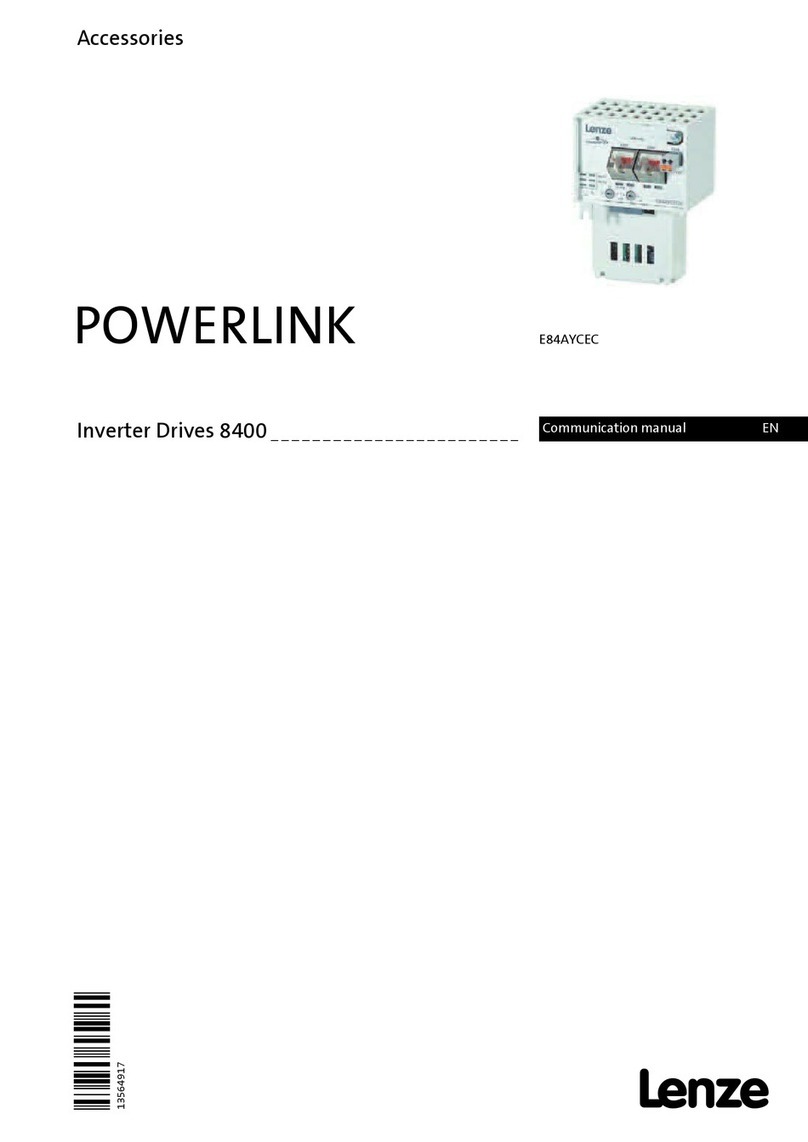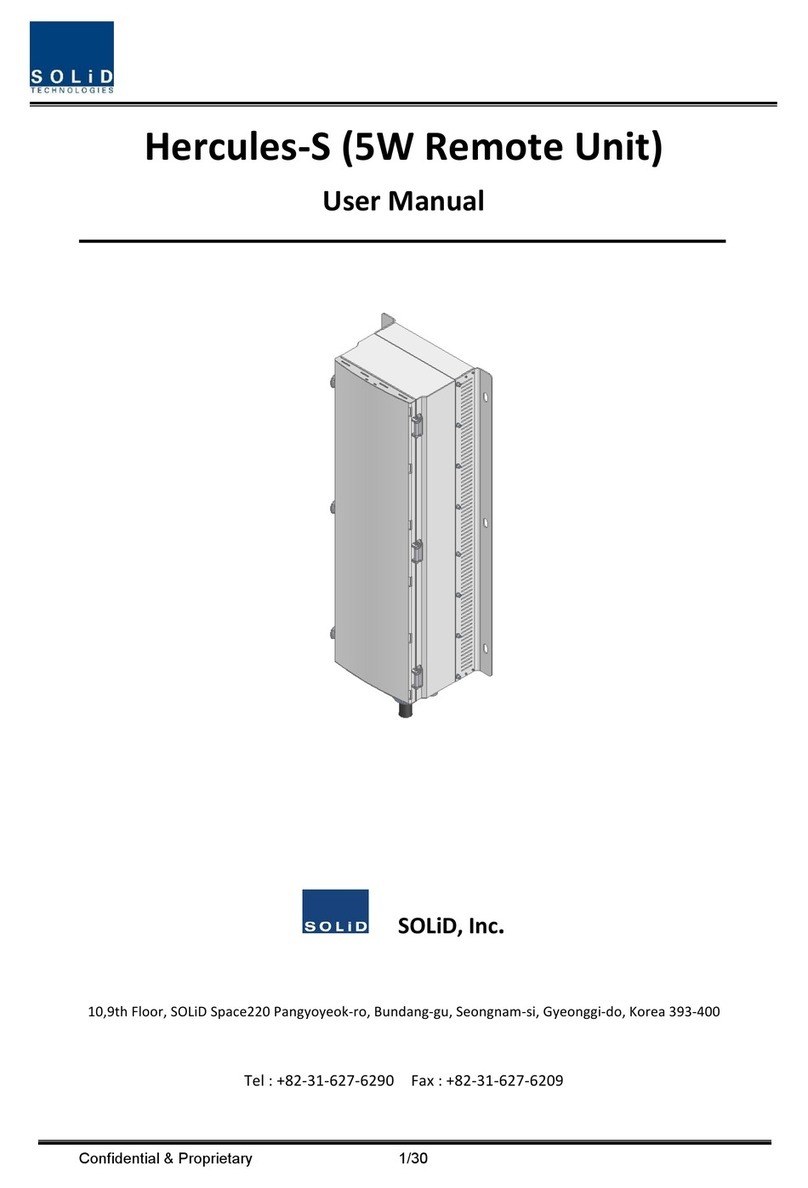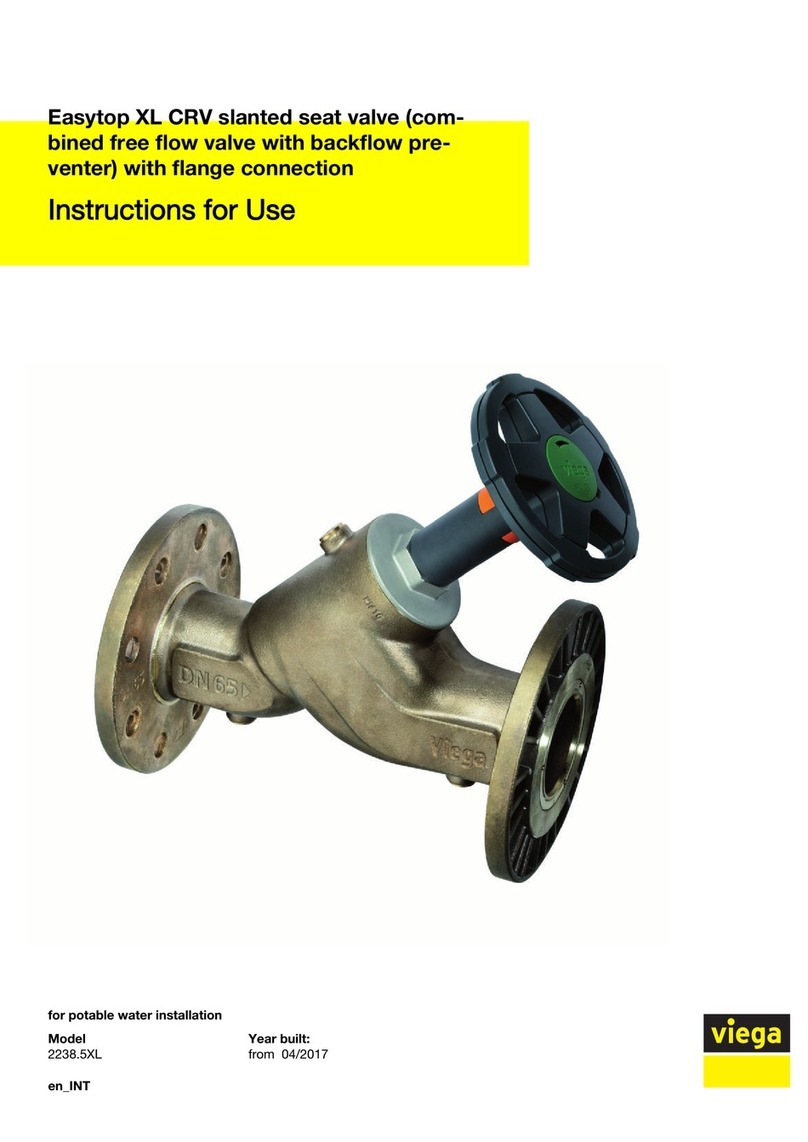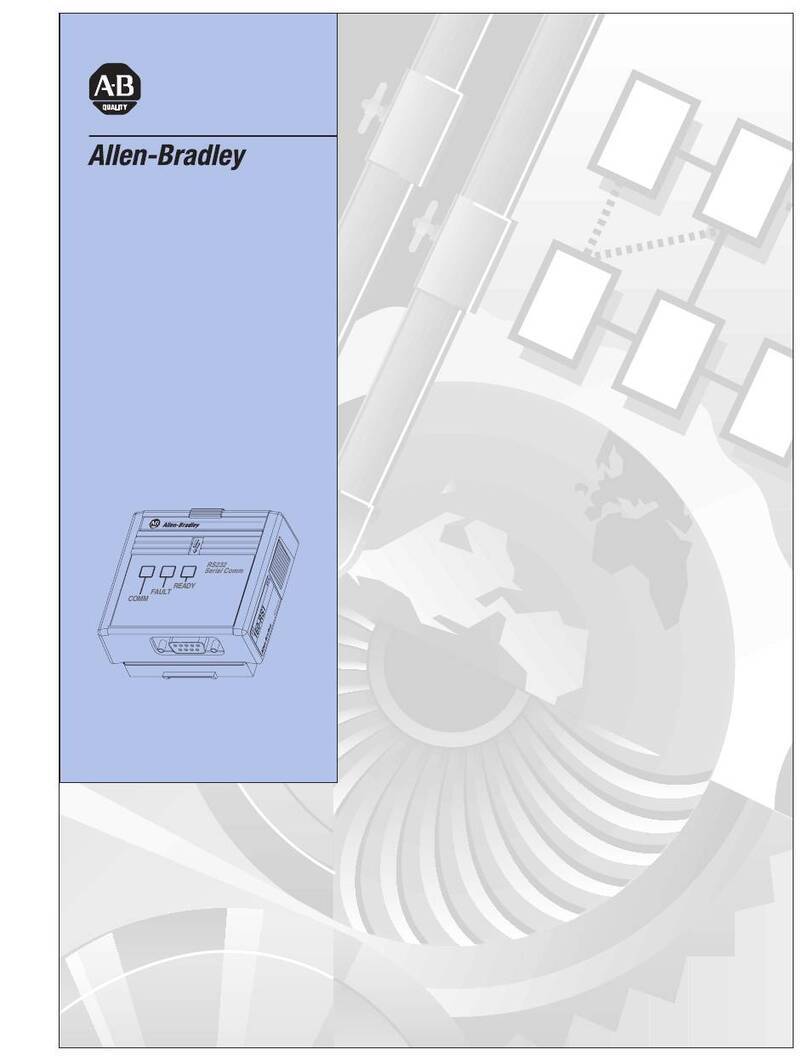Gemalto Cinterion ELS81-US User manual

GEMALTO.COM/M2M
Cinterion®ELS81-US
Hardware Interface Description
Version: 01.004
DocId: els81-us_hid_v01.004

GENERAL NOTE
THE USE OF THE PRODUCT INCLUDING THE SOFTWARE AND DOCUMENTATION (THE "PROD-
UCT") IS SUBJECT TO THE RELEASE NOTE PROVIDED TOGETHER WITH PRODUCT. IN ANY
EVENT THE PROVISIONS OF THE RELEASE NOTE SHALL PREVAIL. THIS DOCUMENT CONTAINS
INFORMATION ON GEMALTO M2M PRODUCTS. THE SPECIFICATIONS IN THIS DOCUMENT ARE
SUBJECT TO CHANGE AT GEMALTO M2M'S DISCRETION. GEMALTO M2M GMBH GRANTS A NON-
EXCLUSIVE RIGHT TO USE THE PRODUCT. THE RECIPIENT SHALL NOT TRANSFER, COPY,
MODIFY, TRANSLATE, REVERSE ENGINEER, CREATE DERIVATIVE WORKS; DISASSEMBLE OR
DECOMPILE THE PRODUCT OR OTHERWISE USE THE PRODUCT EXCEPT AS SPECIFICALLY
AUTHORIZED. THE PRODUCT AND THIS DOCUMENT ARE PROVIDED ON AN "AS IS" BASIS ONLY
AND MAY CONTAIN DEFICIENCIES OR INADEQUACIES. TO THE MAXIMUM EXTENT PERMITTED
BY APPLICABLE LAW, GEMALTO M2M GMBH DISCLAIMS ALL WARRANTIES AND LIABILITIES.
THE RECIPIENT UNDERTAKES FOR AN UNLIMITED PERIOD OF TIME TO OBSERVE SECRECY
REGARDING ANY INFORMATION AND DATA PROVIDED TO HIM IN THE CONTEXT OF THE DELIV-
ERY OF THE PRODUCT. THIS GENERAL NOTE SHALL BE GOVERNED AND CONSTRUED
ACCORDING TO GERMAN LAW.
Copyright
Transmittal, reproduction, dissemination and/or editing of this document as well as utilization of its con-
tents and communication thereof to others without express authorization are prohibited. Offenders will be
held liable for payment of damages. All rights created by patent grant or registration of a utility model or
design patent are reserved.
Copyright © 2017, Gemalto M2M GmbH, a Gemalto Company
Trademark Notice
Gemalto, the Gemalto logo, are trademarks and service marks of Gemalto and are registered in certain
countries. Microsoft and Windows are either registered trademarks or trademarks of Microsoft Corpora-
tion in the United States and/or other countries. All other registered trademarks or trademarks mentioned
in this document are property of their respective owners.
els81-us_hid_v01.004 2017-09-27
Confidential / Preliminary
Cinterion®ELS81-US Hardware Interface Description
2
Page 2 of 107
Document Name: Cinterion®ELS81-US Hardware Interface Description
Version: 01.004
Date: 2017-09-27
DocId: els81-us_hid_v01.004
Status Confidential / Preliminary

Cinterion®ELS81-US Hardware Interface Description
Contents
107
els81-us_hid_v01.004 2017-09-27
Confidential / Preliminary
Page 3 of 107
Contents
1 Introduction.................................................................................................................9
1.1 Key Features at a Glance .................................................................................. 9
1.2 ELS81-US System Overview ........................................................................... 12
1.3 Circuit Concept ................................................................................................ 13
2 Interface Characteristics..........................................................................................15
2.1 Application Interface ........................................................................................ 15
2.1.1 Pad Assignment.................................................................................. 15
2.1.2 Signal Properties................................................................................. 17
2.1.2.1 Absolute Maximum Ratings ................................................ 23
2.1.3 USB Interface...................................................................................... 24
2.1.3.1 Reducing Power Consumption............................................ 25
2.1.4 Serial Interface ASC0 ......................................................................... 26
2.1.5 Serial Interface ASC1 ......................................................................... 28
2.1.6 UICC/SIM/USIM Interface................................................................... 30
2.1.6.1 Enhanced ESD Protection for SIM Interface....................... 32
2.1.7 RTC Backup....................................................................................... 33
2.1.8 GPIO Interface .................................................................................... 34
2.1.9 I2C Interface ........................................................................................ 36
2.1.10 SPI Interface ....................................................................................... 38
2.1.11 PWM Interfaces .................................................................................. 39
2.1.12 Pulse Counter ..................................................................................... 39
2.1.13 Control Signals.................................................................................... 39
2.1.13.1 Status LED .......................................................................... 39
2.1.13.2 Power Indication Circuit ...................................................... 40
2.1.13.3 Host Wakeup....................................................................... 40
2.1.13.4 Fast Shutdown .................................................................... 41
2.2 RF Antenna Interface....................................................................................... 42
2.2.1 Antenna Interface Specifications ........................................................ 42
2.2.2 Antenna Installation ............................................................................ 44
2.2.3 RF Line Routing Design...................................................................... 45
2.2.3.1 Line Arrangement Examples ............................................... 45
2.2.3.2 Routing Example ................................................................. 50
2.3 Sample Application .......................................................................................... 51
2.3.1 Sample Level Conversion Circuit........................................................ 53
3 Operating Characteristics........................................................................................54
3.1 Operating Modes ............................................................................................. 54
3.2 Power Up/Power Down Scenarios................................................................... 55
3.2.1 Turn on ELS81-US.............................................................................. 55
3.2.1.1 Connecting ELS81-US BATT+ Lines .................................. 55
3.2.1.2 Switch on ELS81-US Using ON Signal ............................... 57
3.2.1.3 Automatic Power On ........................................................... 58
3.2.2 Restart ELS81-US .............................................................................. 59

Cinterion®ELS81-US Hardware Interface Description
Contents
107
els81-us_hid_v01.004 2017-09-27
Confidential / Preliminary
Page 4 of 107
3.2.2.1 Restart ELS81-US via AT+CFUN Command ...................... 59
3.2.2.2 Restart ELS81-US Using EMERG_RST ............................. 60
3.2.3 Signal States after Startup .................................................................. 61
3.2.4 Turn off ELS81-US.............................................................................. 62
3.2.4.1 Switch off ELS81-US Using AT Command.......................... 62
3.2.5 Automatic Shutdown ........................................................................... 64
3.2.5.1 Thermal Shutdown .............................................................. 64
3.2.5.2 Undervoltage Shutdown...................................................... 65
3.2.5.3 Overvoltage Shutdown........................................................ 65
3.3 Power Saving................................................................................................... 66
3.3.1 Power Saving while Attached to WCDMA Networks .......................... 66
3.3.2 Power Saving while Attached to LTE Networks.................................. 67
3.3.3 Wake-up via RTS0.............................................................................. 68
3.4 Power Supply................................................................................................... 69
3.4.1 Power Supply Ratings......................................................................... 69
3.4.2 Measuring the Supply Voltage (VBATT+)........................................... 72
3.4.3 Monitoring Power Supply by AT Command ........................................ 72
3.5 Operating Temperatures.................................................................................. 73
3.6 Electrostatic Discharge .................................................................................... 74
3.6.1 ESD Protection for Antenna Interfaces ............................................... 74
3.7 Blocking against RF on Interface Lines ........................................................... 75
3.8 Reliability Characteristics................................................................................. 77
4 Mechanical Dimensions, Mounting and Packaging...............................................78
4.1 Mechanical Dimensions of ELS81-US ............................................................. 78
4.2 Mounting ELS81-US onto the Application Platform ......................................... 80
4.2.1 SMT PCB Assembly ........................................................................... 80
4.2.1.1 Land Pattern and Stencil..................................................... 80
4.2.1.2 Board Level Characterization.............................................. 82
4.2.2 Moisture Sensitivity Level ................................................................... 82
4.2.3 Soldering Conditions and Temperature .............................................. 83
4.2.3.1 Reflow Profile ...................................................................... 83
4.2.3.2 Maximum Temperature and Duration.................................. 84
4.2.4 Durability and Mechanical Handling.................................................... 85
4.2.4.1 Storage Conditions.............................................................. 85
4.2.4.2 Processing Life.................................................................... 86
4.2.4.3 Baking ................................................................................. 86
4.2.4.4 Electrostatic Discharge ....................................................... 86
4.3 Packaging ........................................................................................................ 87
4.3.1 Tape and Reel .................................................................................... 87
4.3.1.1 Orientation........................................................................... 87
4.3.1.2 Barcode Label ..................................................................... 88
4.3.2 Shipping Materials .............................................................................. 89
4.3.2.1 Moisture Barrier Bag ........................................................... 89
4.3.2.2 Transportation Box .............................................................. 91
4.3.3 Trays ................................................................................................... 92

Cinterion®ELS81-US Hardware Interface Description
Contents
107
els81-us_hid_v01.004 2017-09-27
Confidential / Preliminary
Page 5 of 107
5 Regulatory and Type Approval Information...........................................................93
5.1 Directives and Standards................................................................................. 93
5.2 SAR requirements specific to portable mobiles ............................................... 96
5.3 Reference Equipment for Type Approval......................................................... 97
5.4 Compliance with FCC and IC Rules and Regulations ..................................... 98
6 Document Information............................................................................................100
6.1 Revision History ............................................................................................. 100
6.2 Related Documents ....................................................................................... 100
6.3 Terms and Abbreviations ............................................................................... 100
6.4 Safety Precaution Notes ................................................................................ 104
7 Appendix..................................................................................................................105
7.1 List of Parts and Accessories......................................................................... 105

Cinterion®ELS81-US Hardware Interface Description
Tables
118
els81-us_hid_v01.004 2017-09-27
Confidential / Preliminary
Page 6 of 107
Tables
Table 1: Pad assignments............................................................................................ 16
Table 2: Signal properties ............................................................................................ 17
Table 3: Absolute maximum ratings............................................................................. 23
Table 4: Signals of the SIM interface (SMT application interface) ............................... 30
Table 5: GPIO lines and possible alternative assignment............................................ 34
Table 6: Host wakeup lines.......................................................................................... 40
Table 7: Return loss in the active band........................................................................ 42
Table 8: RF Antenna interface UMTS/LTE (at operating temperature range) ............. 42
Table 9: Overview of operating modes ........................................................................ 54
Table 10: Signal states................................................................................................... 61
Table 11: Temperature dependent behavior.................................................................. 64
Table 12: Voltage supply ratings.................................................................................... 69
Table 13: Current consumption ratings (typical ratings to be confirmed)....................... 70
Table 14: Board temperature ......................................................................................... 73
Table 15: Electrostatic values ........................................................................................ 74
Table 16: EMI measures on the application interface.................................................... 76
Table 17: Summary of reliability test conditions............................................................. 77
Table 18: Reflow temperature ratings............................................................................ 84
Table 19: Storage conditions ......................................................................................... 85
Table 20: Directives ....................................................................................................... 93
Table 21: Standards of North American type approval .................................................. 93
Table 22: Standards of European type approval............................................................ 93
Table 23: Requirements of quality ................................................................................. 94
Table 24: Standards of the Ministry of Information Industry of the
People’s Republic of China............................................................................ 94
Table 25: Toxic or hazardous substances or elements with defined
concentration limits ........................................................................................ 95
Table 26: List of parts and accessories........................................................................ 105
Table 27: Molex sales contacts (subject to change) .................................................... 106

Cinterion®ELS81-US Hardware Interface Description
Figures
118
els81-us_hid_v01.004 2017-09-27
Confidential / Preliminary
Page 7 of 107
Figures
Figure 1: ELS81-US system overview........................................................................... 12
Figure 2: ELS81-US block diagram............................................................................... 13
Figure 3: ELS81-US RF section block diagram............................................................. 14
Figure 4: Numbering plan for connecting pads (bottom view)....................................... 15
Figure 5: USB circuit ..................................................................................................... 24
Figure 6: Serial interface ASC0..................................................................................... 26
Figure 7: ASC0 startup behavior................................................................................... 27
Figure 8: Serial interface ASC1..................................................................................... 28
Figure 9: ASC1 startup behavior................................................................................... 29
Figure 10: External UICC/SIM/USIM card holder circuit ................................................. 31
Figure 11: SIM interface - enhanced ESD protection...................................................... 32
Figure 12: RTC supply variants....................................................................................... 33
Figure 13: GPIO startup behavior ................................................................................... 35
Figure 14: I2C interface connected to V180 .................................................................... 36
Figure 15: I2C startup behavior ....................................................................................... 37
Figure 16: Characteristics of SPI modes......................................................................... 38
Figure 17: Status signaling with LED driver .................................................................... 39
Figure 18: Power indication circuit .................................................................................. 40
Figure 19: Fast shutdown timing ..................................................................................... 41
Figure 20: Antenna pads (bottom view) .......................................................................... 44
Figure 21: Embedded Stripline with 65µm prepreg (1080) and 710µm core .................. 45
Figure 22: Micro-Stripline on 1.0mm standard FR4 2-layer PCB - example 1 ................ 46
Figure 23: Micro-Stripline on 1.0mm Standard FR4 PCB - example 2............................ 47
Figure 24: Micro-Stripline on 1.5mm Standard FR4 PCB - example 1............................ 48
Figure 25: Micro-Stripline on 1.5mm Standard FR4 PCB - example 2............................ 49
Figure 26: Routing to application‘s RF connector - top view........................................... 50
Figure 27: Schematic diagram of ELS81-US sample application.................................... 52
Figure 28: Sample level conversion circuit...................................................................... 53
Figure 29: Sample circuit for applying power using an external µC ................................ 56
Figure 30: ON circuit options........................................................................................... 57
Figure 31: ON timing ....................................................................................................... 58
Figure 32: Automatic ON circuit based on voltage detector - option 1............................ 58
Figure 33: Automatic ON circuit based on voltage detector - option 2............................ 59
Figure 34: Emergency restart timing ............................................................................... 60
Figure 35: Switch off behavior......................................................................................... 63
Figure 36: Power saving and paging in WCDMA networks............................................. 66
Figure 37: Power saving and paging in LTE networks.................................................... 67
Figure 38: Wake-up via RTS0......................................................................................... 68
Figure 39: Position of reference points BATT+ and GND ............................................... 72
Figure 40: ESD protection for RF antenna interface ....................................................... 74
Figure 41: EMI circuits..................................................................................................... 75
Figure 42: ELS81-US– top and bottom view................................................................... 78
Figure 43: Dimensions of ELS81-US (all dimensions in mm) ......................................... 79
Figure 44: Land pattern (top view) .................................................................................. 80
Figure 45: Recommended design for 110µm thick stencil (top view).............................. 81
Figure 46: Recommended design for 150µm thick stencil (top view).............................. 81
Figure 47: Reflow Profile................................................................................................. 83
Figure 48: Carrier tape .................................................................................................... 87
Figure 49: Reel direction ................................................................................................. 87
Figure 50: Barcode label on tape reel ............................................................................. 88

Cinterion®ELS81-US Hardware Interface Description
Figures
118
els81-us_hid_v01.004 2017-09-27
Confidential / Preliminary
Page 8 of 107
Figure 51: Moisture barrier bag (MBB) with imprint......................................................... 89
Figure 52: Moisture Sensitivity Label .............................................................................. 90
Figure 53: Humidity Indicator Card - HIC ........................................................................ 91
Figure 54: Tray dimensions............................................................................................. 92
Figure 55: Reference equipment for Type Approval ....................................................... 97

Cinterion®ELS81-US Hardware Interface Description
1 Introduction
14
els81-us_hid_v01.004 2017-09-27
Confidential / Preliminary
Page 9 of 107
1 Introduction
This document1describes the hardware of the Cinterion®ELS81-US module. It helps you
quickly retrieve interface specifications, electrical and mechanical details and information on
the requirements to be considered for integrating further components.
1.1 Key Features at a Glance
1. The document is effective only if listed in the appropriate Release Notes as part of the technical docu-
mentation delivered with your Gemalto M2M product.
Feature Implementation
General
Frequency bands UMTS/HSPA+: Triple band, 850 (BdV) / AWS (BdIV) / 1900MHz (BdII)
LTE: Quad band, 700 (Bd12) / 850 (Bd5) / AWS (Bd4) / 1900MHz (Bd2)
Output power (according
to Release 99)
Class 3 (+24dBm +1/-3dB) for UMTS 1900,WCDMA FDD BdII
Class 3 (+24dBm +1/-3dB) for UMTS AWS, WCDMA FDD BdIV
Class 3 (+24dBm +1/-3dB) for UMTS 850, WCDMA FDD BdV
Output power (according
to Release 8)
Class 3 (+23dBm ±2dB) for LTE 1900,LTE FDD Bd2
Class 3 (+23dBm ±2dB) for LTE AWS, LTE FDD Bd4
Class 3 (+23dBm ±2dB) for LTE 850, LTE FDD Bd5
Class 3 (+23dBm ±2dB) for LTE 700, LTE FDD Bd12
Power supply 3.0V to 4.5V
Operating temperature
(board temperature)
Normal operation: -30°C to +85°C
Extended operation: -40°C to +90°C
Physical Dimensions: 27.6mm x 25.4mm x 2.2mm
Weight: approx. 4g
RoHS All hardware components fully compliant with EU RoHS Directive
LTE features
3GPP Release 9 UE CAT 4 supported
DL 150Mbps, UL 50Mbps
HSPA features
3GPP Release 8 DL 7.2Mbps, UL 5.7Mbps
HSDPA Cat.8 / HSUPA Cat.6 data rates
Compressed mode (CM) supported according to 3GPP TS25.212
UMTS features
3GPP Release 4 PS data rate – 384 kbps DL / 384 kbps UL
CS data rate – 64 kbps DL / 64 kbps UL

Cinterion®ELS81-US Hardware Interface Description
1.1 Key Features at a Glance
14
els81-us_hid_v01.004 2017-09-27
Confidential / Preliminary
Page 10 of 107
SMS Point-to-point MT and MO
Cell broadcast
Text and PDU mode
Storage: SIM card plus SMS locations in mobile equipment
Software
AT commands Hayes 3GPP TS 27.007, TS 27.005, Gemalto M2M
AT commands for RIL compatibility
Java™ Open Platform Java™ Open Platform with
• Java™ profile IMP-NG & CLDC 1.1 HI
• Secure data transmission via HTTPS/SSL1
• Multi-threading programming and multi-application execution
Major benefits: seamless integration into Java applications, ease of pro-
gramming, no need for application microcontroller, extremely cost-efficient
hardware and software design – ideal platform for industrial applications.
The memory space available for Java programs is 30MB in the flash file
system and 18MB RAM. Application code and data share the space in the
flash file system and in RAM.
Microsoft™ compatibility RIL for Pocket PC and Smartphone
SIM Application Toolkit SAT letter classes b, c, e; with BIP
Firmware update Generic update from host application over ASC0 or USB modem.
Interfaces
Module interface Surface mount device with solderable connection pads (SMT application
interface). Land grid array (LGA) technology ensures high solder joint reli-
ability and allows the use of an optional module mounting socket.
For more information on how to integrate SMT modules see also [3]. This
application note comprises chapters on module mounting and application
layout issues as well as on additional SMT application development equip-
ment.
USB USB 2.0 High Speed (480Mbit/s) device interface, Full Speed (12Mbit/s)
compliant
2 serial interfaces ASC0 (shared with GPIO lines):
• 8-wire modem interface with status and control lines, unbalanced, asyn-
chronous
• Adjustable baud rates: 1,200bps to 921,600bps
• Autobauding: 1,200bps to 230,400bps
• Supports RTS0/CTS0 hardware flow control.
ASC1 (shared with GPIO lines):
• 4-wire, unbalanced asynchronous interface
• Adjustable baud rates: 1,200bps to 921,60bps
• Autobauding: 1,200bps to 230,400bps
• Supports RTS1/CTS1 hardware flow control
UICC interface Supported SIM/USIM cards: 3V, 1.8V
Feature Implementation

Cinterion®ELS81-US Hardware Interface Description
1.1 Key Features at a Glance
14
els81-us_hid_v01.004 2017-09-27
Confidential / Preliminary
Page 11 of 107
GPIO interface 22 GPIO lines comprising:
13 lines shared with ASC0, ASC1 and SPI lines, with network status indica-
tion, PWM functionality, fast shutdown and pulse counter
5 GPIO lines not shared
I2C interface Supports I2C serial interface
SPI interface Serial peripheral interface, shared with GPIO lines
Antenna interface pads 50. UMTS/LTE main antenna, UMTS/LTE Rx Diversity antenna
Power on/off, Reset
Power on/off Switch-on by hardware signal ON
Switch-off by AT command
Switch off by hardware signal FST_SHDN instead of AT command
Automatic switch-off in case of critical temperature or voltage conditions
Reset Orderly shutdown and reset by AT command
Emergency reset by hardware signal EMERG_RST
Special features
Real time clock Timer functions via AT commands
Evaluation kit
Evaluation module ELS81-US module soldered onto a dedicated PCB that can be connected
to an adapter in order to be mounted onto the DSB75.
DSB75 DSB75 Development Support Board designed to test and type approve
Gemalto M2M modules and provide a sample configuration for application
engineering. A special adapter is required to connect the ELS81-US evalu-
ation module to the DSB75.
1. HTTP/SecureConnection over SSL version 3.0 and TLS versions 1.0, 1.1, and 1.2 are supported. For
details please refer to Java User’s Guide for Cinterion ®ELS81-US.
Feature Implementation

Cinterion®ELS81-US Hardware Interface Description
1.2 ELS81-US System Overview
14
els81-us_hid_v01.004 2017-09-27
Confidential / Preliminary
Page 12 of 107
1.2 ELS81-US System Overview
Figure 1: ELS81-US system overview
GPIO
interface
I2C
USB
ASC0 lines
ASC1/SPI
CONTROL
RTC
POWER
Rx diversity
antenna
(UMTS/LTE)
Module
SIM interface
(with SIM detection)
SIM card
Application
Power supply
Backup supply
Emergency reset
ON
Serial interface/
SPI interface
Serial modem
interface lines
I2C
GPIO
3
4
4
5
2
9
1
1
1
2
USB
Rx diversity
1
Status LED
1
DAC (PWM) PWM
2
Fast
shutdown Fast shutdown
1
1
COUNTER Pulse counter
1
ASC0 lines
Serial modem
interface lines/
SPI interface
4
Main antenna
(UMTS/LTE)
Main antenna
1

Cinterion®ELS81-US Hardware Interface Description
1.3 Circuit Concept
14
els81-us_hid_v01.004 2017-09-27
Confidential / Preliminary
Page 13 of 107
1.3 Circuit Concept
Figure 2 and Figure 3 show block diagrams of the ELS81-US module and illustrate the major
functional components:
Figure 2: ELS81-US block diagram
SD1 SD2
SD2
LDOs
PMU
LDOs
ON
Reset_BB
SD3
I2CDAT
I2CCLK
USB
GPIO
SIM
CCIN
LPDDR2
SDRAM
FLASH
VDD
VDD
ADQ0 ~ ADQ15
DDR_CA _0~DDR _CA _9
DDR _DQ_0~DDR_DQ_15
Control
Control
CCIN
SIM
GPIO
ASC0
USB
I2C
ON circuit
ON
EMERG _RST
BATT+BB
RX/TX
RF control
V180
Baseband
controller
and
Power
management
USIF1/
GPIO
FST_SHDWN
ASC1/GPIO/
SPI USIF3

Cinterion®ELS81-US Hardware Interface Description
1.3 Circuit Concept
14
els81-us_hid_v01.004 2017-09-27
Confidential / Preliminary
Page 14 of 107
Figure 3: ELS81-US RF section block diagram
LTE / UMTS
RF transceiver
SKY77622
SKY13525
SKY13525
Band2
SAW
Filter
Band4
SAW
Filter
Band5
SAW
Filter
Band12
SAW
Filter
Diversity Antenna
Band2
Duplexer
Band4
Duplexer
Band5
Duplexer
Band12
Duplexer
Antenna
Coupler
B2_OUT
B4_OUT
B5_OUT
B12_OUT
4G_HB_IN
2G/3G_HB_IN
4G_LB_IN
2G/3G_LB_IN
TQ_H
TP_H
TQ_L
TP_L
RX_M1
RX_M1X
RX_H4
RX_H4X
RX_L1
RX_L1X
RX_L3
RX_L3X
4G_HB_IN
4G_HB_IN
4G_HB_IN
4G_HB_IN
TRX4
TRX6
TRX5
TRX2
TRX2
TRX1
TRX3
TRX5
PA DCDC
SKY87000
BATT+RF
FBR_RF2
MAIN_FWD
MIPI
26MHz
RX/TX
BATT+BB
V180
RF control

Cinterion®ELS81-US Hardware Interface Description
2 Interface Characteristics
53
els81-us_hid_v01.004 2017-09-27
Confidential / Preliminary
Page 15 of 107
2 Interface Characteristics
ELS81-US is equipped with an SMT application interface that connects to the external applica-
tion. The SMT application interface incorporates the various application interfaces as well as
the RF antenna interface.
2.1 Application Interface
2.1.1 Pad Assignment
The SMT application interface on the ELS81-US provides connecting pads to integrate the
module into external applications. Figure 4 shows the connecting pads’ numbering plan, the
following Table 1 lists the pads’ assignments.
Figure 4: Numbering plan for connecting pads (bottom view)
Supply pads: BATT+
Control pads
GND pads
ASC0 pads Combined GPIO/ASC1/SPI pads
SIM pads
I2C pads
Supply pads: Other
Combined GPIO/Control pads
(LED, PWM, COUNTER, FST_SHDN)
USB pads
GPIO pads
218217216215214213212211210209208
207
206
205204203202201
33
32
31
30
29
28
27
26
25
24
23
22
21
20
53
54
55
56
57
58
59
60
61
62
63
64
65
66
223224225226227228229230231232233234235236237238239240
67 68 69 70 71 72 73
74 75 76 77 78 79 80
93 94 95 96 97 98 99
100 101 102 103 104 105 106
85 86
89 90
81 82
87 88
91 92
83 84
243
244
241
242
222
221
220
219
252
245
250
251
249
248
247
246
RF antenna pads
Do not use
Not connected
Reserved
Combined GPIO/
ASC0/SPI pads
ADC pad

Cinterion®ELS81-US Hardware Interface Description
2.1 Application Interface
53
els81-us_hid_v01.004 2017-09-27
Confidential / Preliminary
Page 16 of 107
Signal pads that are not used should not be connected to an external application.
Please note that the reference voltages listed in Table 2 are the values measured directly on
the ELS81-US module. They do not apply to the accessories connected.
Table 1: Pad assignments
Pad no. Signal name Pad no. Signal name Pad no. Signal name
201 Not connected 24 GPIO22 235 USB_DN
202 Not connected 25 GPIO21 236 Not connected
203 GND 26 GPIO23 237 Not connected
204 BATT+BB 27 I2CDAT 238 GND
205 GND 28 I2CCLK 239 GPIO5/LED
206 ADC1 29 GPIO17/TXD1/MISO 240 GPIO6/PWM2
207 ON 30 GPIO16/RXD1/MOSI 241 GPIO7/PWM1
208 GND 31 GPIO18/RTS1 242 GPIO8/COUNTER
209 V180 32 GPIO19/CTS1/SPI_CS 53 BATT+RF
210 RXD0 33 EMERG_RST 54 GND
211 CTS0 221 GPIO12 55 GND
212 TXD0 222 GPIO11 56 ANT_DRX
213 GPIO24/RING0 223 GND 57 GND
214 RTS0 224 Not connected 58 GND
215 VDDLP 225 GND 59 ANT_MAIN
216 CCRST 226 Not connected 60 GND
217 CCIN 227 GND 61 GND
218 CCIO 228 Not connected 62 GND
219 GPIO14 229 GPIO4/FST_SHDN 63 GND
220 GPIO13 230 GPIO3/DSR0/SPI_CLK 64 Not connected
20 CCVCC 231 GPIO2/DCD0 65 Not connected
21 CCCLK 232 GPIO1/DTR0 66 Not connected
22 VCORE 233 VUSB 243 Not connected
23 GPIO20 234 USB_DP 244 GPIO15
Centrally located pads
67 Not connected 83 GND 99 GND
68 Not connected 84 GND 100 GND
69 Not connected 85 GND 101 GND
70 Not connected 86 GND 102 GND
71 Not connected 87 Not connected 103 GND
72 Not connected 88 GND 104 Not connected
73 Not connected 89 GND 105 Not connected
74 Do not use 90 GND 106 Not connected
75 Do not use 91 Not connected 245 GND
76 Not connected 92 GND 246 Not connected
77 Not connected 93 GND 247 Not connected
78 Not connected 94 GND 248 Not connected
79 Not connected 95 GND 249 Not connected
80 Not connected 96 GND 250 GND
81 GND 97 GND 251 GND
82 GND 98 GND 252 GND

Cinterion®ELS81-US Hardware Interface Description
2.1 Application Interface
53
els81-us_hid_v01.004 2017-09-27
Confidential / Preliminary
Page 17 of 107
2.1.2 Signal Properties
Table 2: Signal properties
Function Signal name IO Signal form and level Comment
Power
supply
BATT+BB
BATT+RF
IWCDMA activated:
VImax = 4.5V
VInorm = 3.8V
VImin = 3.0V during Transmit active.
Imax = 900mA during Tx
LTE activated:
VImax = 4.5V
VInorm = 3.8V
VImin = 3.0V during Transmit active.
Lines of BATT+ and GND
must be connected in
parallel for supply pur-
poses because higher
peak currents may occur.
Minimum voltage must
not fall below 3.0V includ-
ing drop, ripple, spikes
and not rise above 4.5V.
BATT+BB and BATT+RF
require an ultra low ESR
capacitor:
BATT+BB --> 150µF
BATT+RF --> 150µF
If using Multilayer
Ceramic Chip Capacitors
(MLCC) please take DC-
bias into account.
Note that minimum ESR
value is advised at
<70m.
Power
supply
GND Ground Application Ground
External
supply
voltage
V180 O Normal operation:
VOnorm = 1.80V ±3%
IOmax = -10mA
SLEEP mode Operation:
VOSleep = 1.80V ±5%
IOmax = -10mA
CLmax = 100µF
V180 should be used to
supply level shifters at
the interfaces or to supply
external application cir-
cuits.
VCORE and V180 may
be used for the power
indication circuit.
Vcore and V180 are
sensitive against back-
powering by other sig-
nals.Whileswitchedoff
these voltage domains
must have <0.2V.
If unused keep lines
open.
VCORE O VOnorm = 1.2V ±2.5%
IOmax = -10mA
CLmax = 100nF
SLEEP mode Operation:
VOSleep = 0.90V...1.2V ±4%
IOmax = -10mA
Ignition ON1IV
IHmax = 5V tolerant
VIHmin = 1.3V
VILmax = 0.5V
Slew rate < 1ms
ON ___|~~~~
This signal switches the
module on, and is rising
edge sensitive triggered.
Internal pull down value
for this signal is 100k.

Cinterion®ELS81-US Hardware Interface Description
2.1 Application Interface
53
els81-us_hid_v01.004 2017-09-27
Confidential / Preliminary
Page 18 of 107
Emer-
gency
restart
EMERG_RST I RI1k, CI1nF
VOHmax = VDDLP max
VIHmin = 1.35V
VILmax = 0.3V at ~200µA
~~|___|~~ low impulse width > 10ms
This line must be driven
low by an open drain or
open collector driver con-
nected to GND.
If unused keep line open.
RTC
backup
VDDLP I/O VOnorm = 1.8V ±5%
IOmax = -25mA
VImax = 1.9V
VImin = 1.0V
IItyp < 1µA
It is recommended to use
a serial resistor between
VDDLP and a possible
capacitor (bigger than
1µF).
If unused keep line open.
USB VUSB_IN I VImin = 3V
VImax = 5.25V
Active and suspend current:
Imax < 100µA
All electrical characteris-
tics according to USB
Implementers' Forum,
USB 2.0 Specification.
If unused keep lines
open.
USB_DN I/O Full and high speed signal characteris-
tics according USB 2.0 Specification.
USB_DP
Serial
Interface
ASC0
RXD0 O VOLmax = 0.25V at I = 1mA
VOHmin = 1.55V at I = -1mA
VOHmax = 1.85V
If unused keep lines
open.
Note that some ASC0
lines are originally avail-
able as GPIO lines. If
configured as ASC0
lines, the GPIO lines are
assigned as follows:
GPIO1 --> DTR0
GPIO2 --> DCD0
GPIO3 --> DSR0
GPIO24 --> RING0
The DSR0 line is also
shared with the SPI inter-
face‘s SPI_CLK signal.
Note that DCD0/GPIO2
must not be driven low
during startup
CTS0 O
DSR0 O
DCD0 O
RING0 O
TXD0 I VILmax = 0.35V
VIHmin = 1.30V
VIHmax = 1.85V
RTS0 I Pull down resistor active
VILmax = 0.35V at > 50µA
VIHmin = 1.30V at < 240µA
VIHmax = 1.85V at < 240µA
DTR0 I Pull up resistor active
VILmax = 0.35V at < -200µA
VIHmin = 1.30V at > -50µA
VIHmax = 1.85V
Table 2: Signal properties
Function Signal name IO Signal form and level Comment

Cinterion®ELS81-US Hardware Interface Description
2.1 Application Interface
53
els81-us_hid_v01.004 2017-09-27
Confidential / Preliminary
Page 19 of 107
Serial
Interface
ASC1
RXD1 O VOLmax = 0.25V at I = 1mA
VOHmin = 1.55V at I = -1mA
VOHmax = 1.85V
VILmax = 0.35V
VIHmin = 1.30V
VIHmax = 1.85V
If unused keep line open.
Note that the ASC1 inter-
face lines are originally
available as GPIO lines.
If configured as ASC1
lines, the GPIO lines are
assigned as follows:
GPIO16 --> RXD1
GPIO17 --> TXD1
GPIO18 --> RTS1
GPIO19 --> CTS1
TXD1 I
RTS1 I
CTS1 O
SIM card
detection
CCIN I RI110k
VIHmin = 1.45V at I = 15µA,
VIHmax= 1.9V
VILmax = 0.3V
CCIN = High, SIM card
inserted.
For details please refer to
Section 2.1.6.
If unused keep line open.
3V SIM
Card Inter-
face
CCRST O VOLmax = 0.30V at I = 1mA
VOHmin = 2.45V at I = -1mA
VOHmax = 2.90V
Maximum cable length or
copper track to SIM card
holder should not exceed
100mm.
CCIO I/O VILmax = 0.50V
VIHmin = 2.05V
VIHmax = 2.90V
VOLmax = 0.25V at I = 1mA
VOHmin = 2.50V at I = -1mA
VOHmax = 2.90V
CCCLK O VOLmax = 0.25V at I = 1mA
VOHmin = 2.40V at I = -1mA
VOHmax = 2.90V
CCVCC O VOmin= 2.70V
VOtyp = 2.90V
VOmax = 3.30V
IOmax = -30mA
Table 2: Signal properties
Function Signal name IO Signal form and level Comment

Cinterion®ELS81-US Hardware Interface Description
2.1 Application Interface
53
els81-us_hid_v01.004 2017-09-27
Confidential / Preliminary
Page 20 of 107
1.8V SIM
Card Inter-
face
CCRST O VOLmax = 0.25V at I = 1mA
VOHmin = 1.45V at I = -1mA
VOHmax = 1.90V
Maximum cable length or
copper track to SIM card
holder should not exceed
100mm.
CCIO I/O VILmax = 0.35V
VIHmin = 1.25V
VIHmax = 1.85V
VOLmax = 0.25V at I = 1mA
VOHmin = 1.50V at I = -1mA
VOHmax = 1.85V
CCCLK O VOLmax = 0.25V at I = 1mA
VOHmin = 1.50V at I = -1mA
VOHmax = 1.85V
CCVCC O VOmin = 1.75V
VOtyp = 1.80V
VOmax = 1.85V
IOmax = -30mA
I2C I2CCLK IO Open drain IO
VOLmin = 0.35V at Imax = 4mA (Imax
= Imax external + I pull-up)
VOHmax = 1.85V
R external pull up min = 560
VILmax = 0.35V
VIHmin = 1.3V
VIHmax = 1.85V
According to the I2C Bus
Specification Version 2.1
for the fast mode a rise
time of max. 300ns is per-
mitted. There is also a
maximum VOL=0.4V at
3mA specified.
The value of the pull-up
depends on the capaci-
tive load of the whole sys-
tem (I2C Slave + lines).
The maximum sink cur-
rent of I2CDAT and
I2CCLK is 4mA.
I2C interface of the mod-
ule already has internal
1KOhm pull up resistor to
V180 inside the module.
Please take this into con-
sideration during applica-
tion design.
If lines are unused keep
lines open.
I2CDAT IO
Table 2: Signal properties
Function Signal name IO Signal form and level Comment
Table of contents
Other Gemalto Control Unit manuals
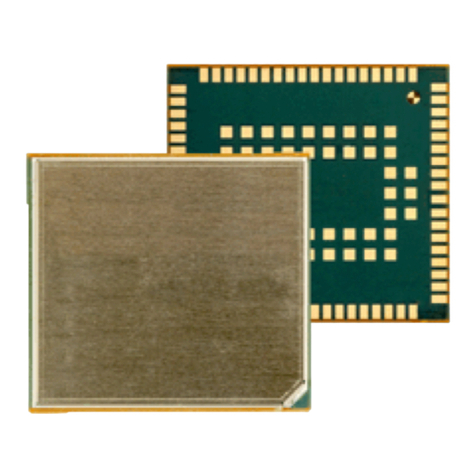
Gemalto
Gemalto Cinterion EHS6 Installation instructions
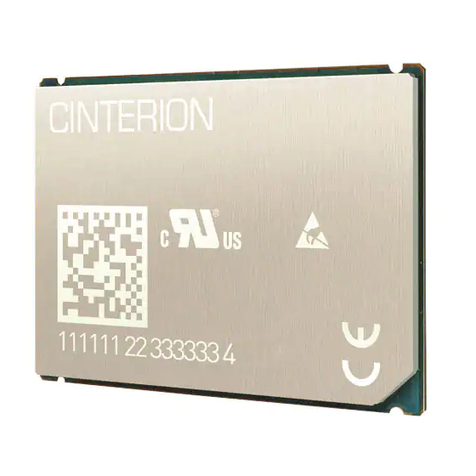
Gemalto
Gemalto Cinterion EMS31-V Installation guide
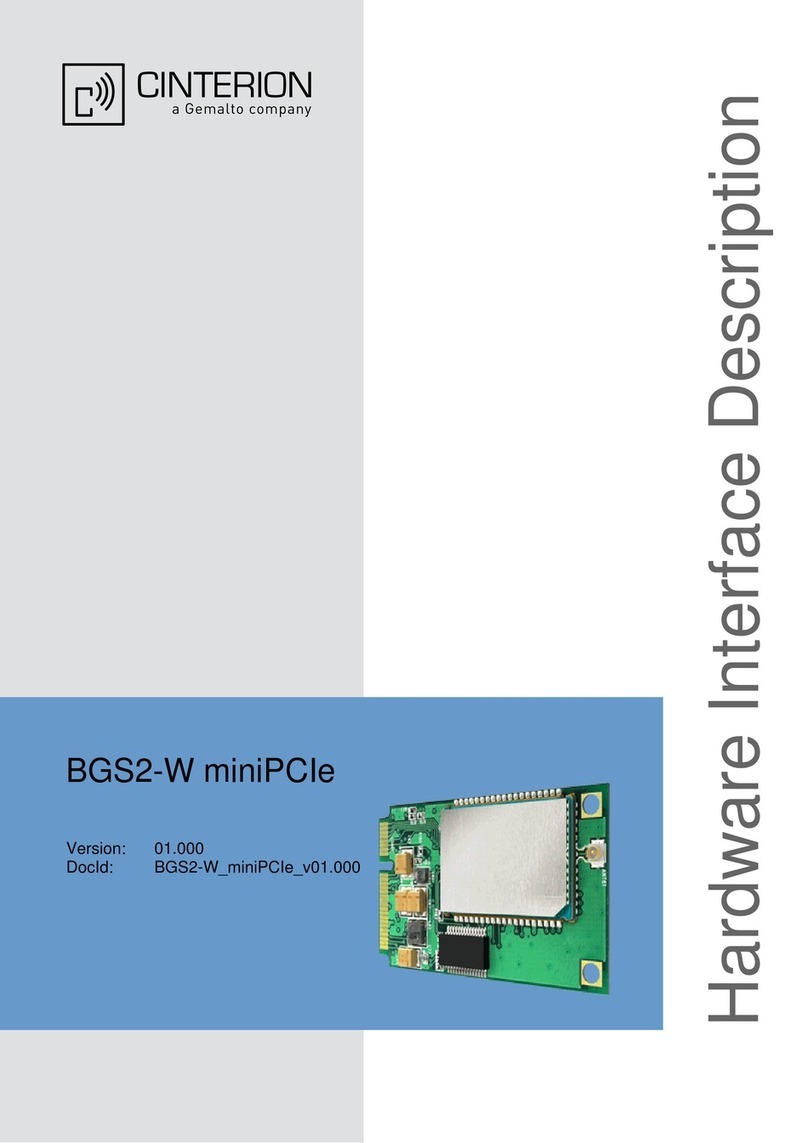
Gemalto
Gemalto Cinterion BGS2-W miniPCIe User manual
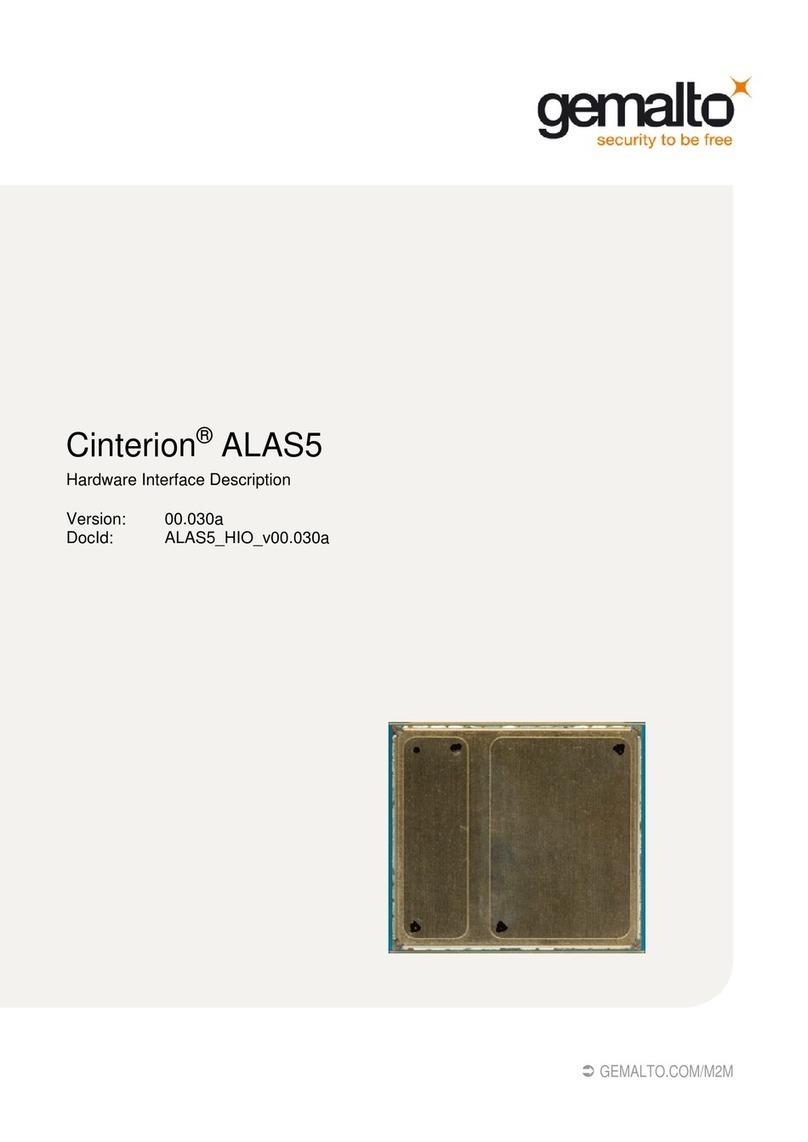
Gemalto
Gemalto Cinterion ALAS5 User manual
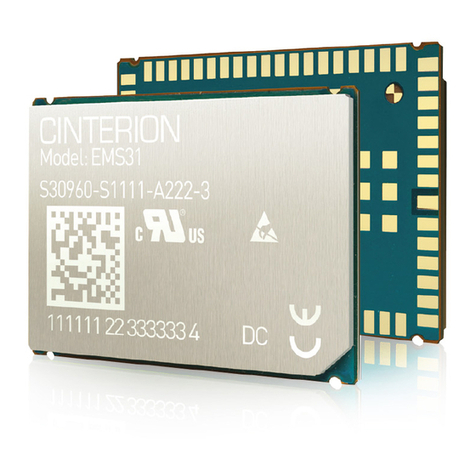
Gemalto
Gemalto Cinterion EMS31 User manual
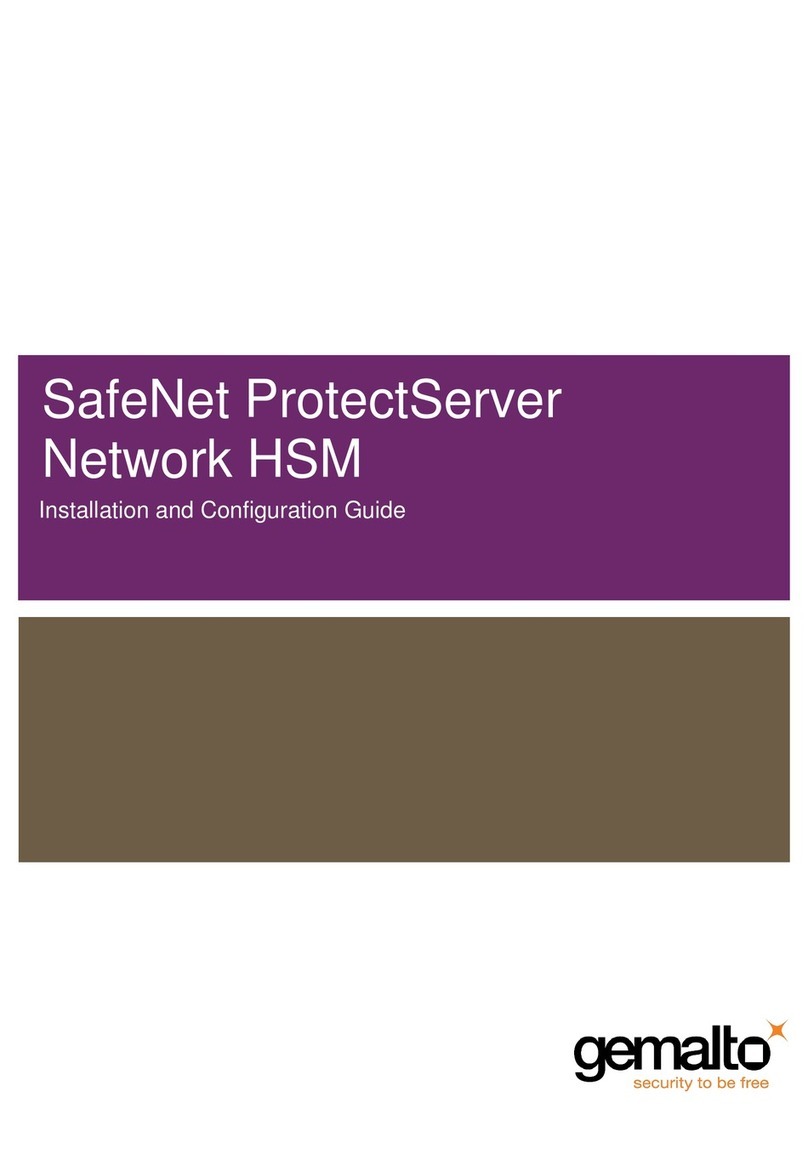
Gemalto
Gemalto SafeNet ProtectServer Operator's manual
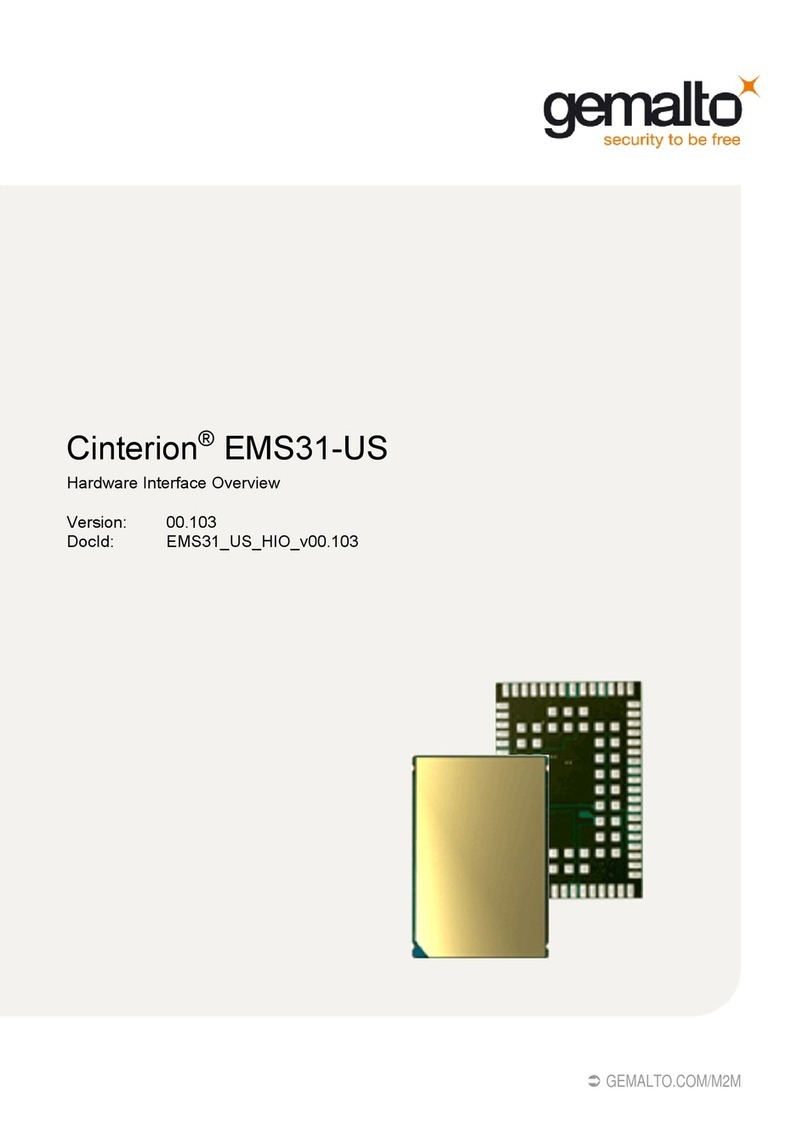
Gemalto
Gemalto Cinterion EMS31-US Installation guide
Popular Control Unit manuals by other brands

Pentair
Pentair FLECK 2900S Service manual
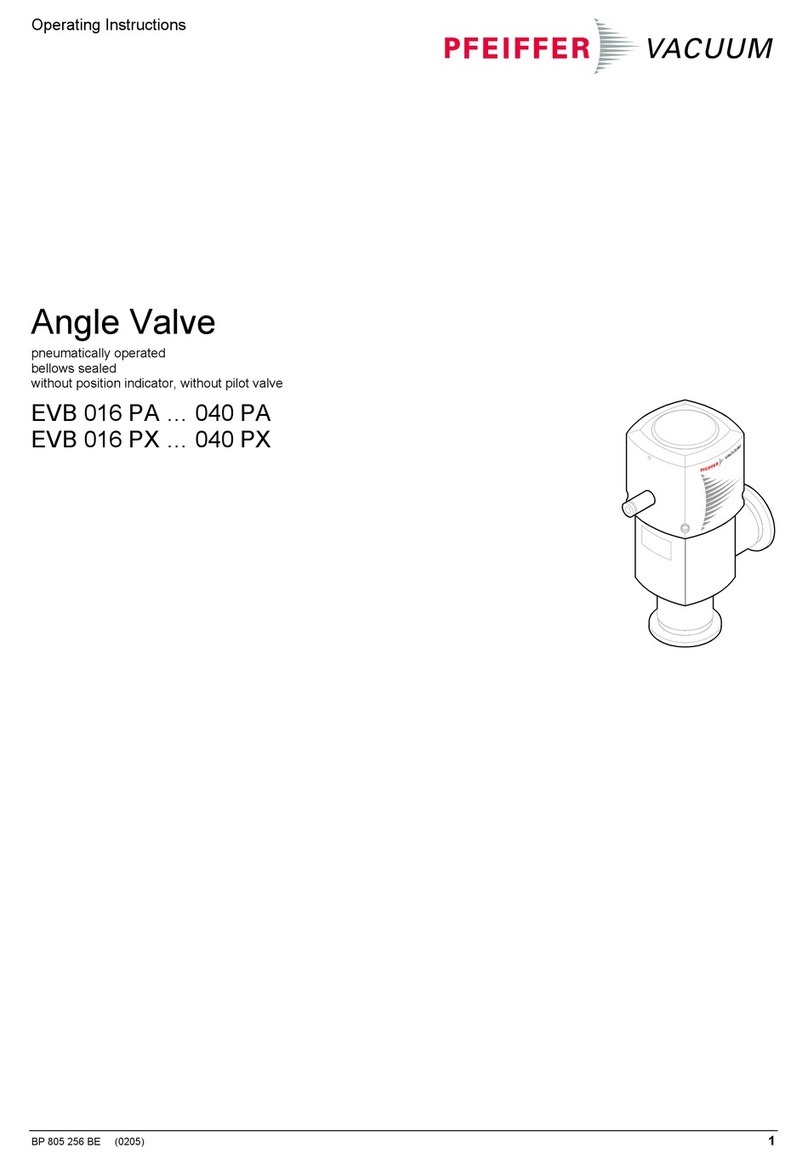
Pfeiffer Vacuum
Pfeiffer Vacuum EVB 016 PA operating instructions
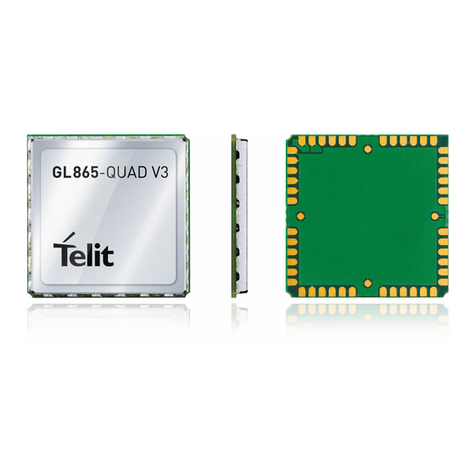
Telit Wireless Solutions
Telit Wireless Solutions GL865-DUAL V3 Hardware user's guide

Siemens
Siemens LOGO! Series manual

Emerson
Emerson Fisher 63EGLP Series instruction manual

Xycom
Xycom XVME-654 manual
